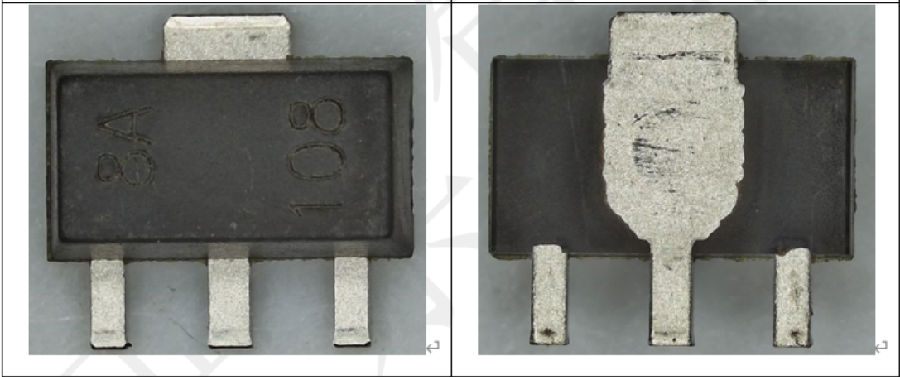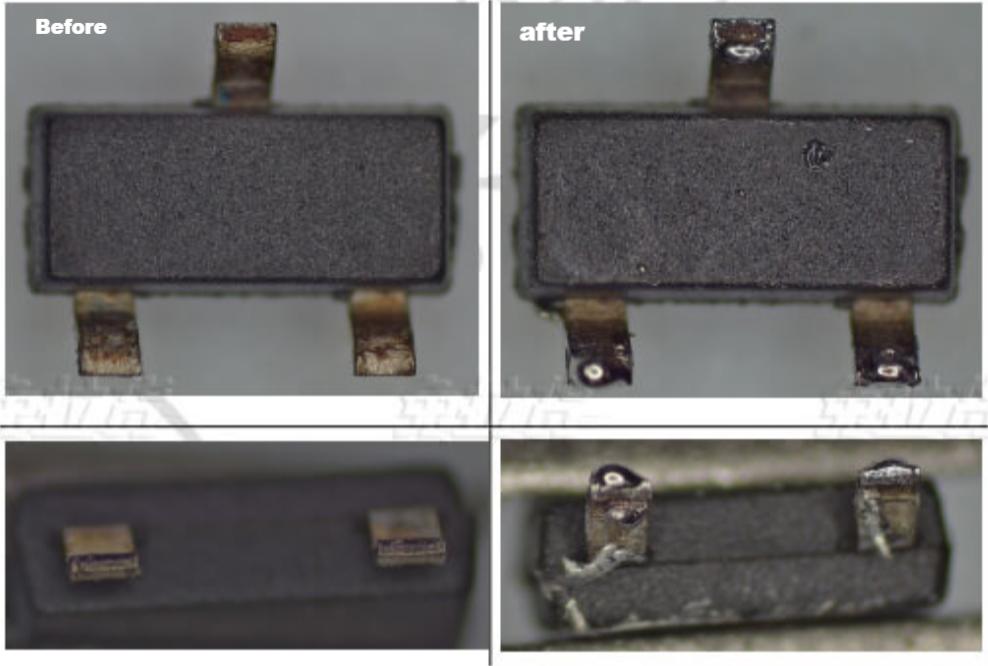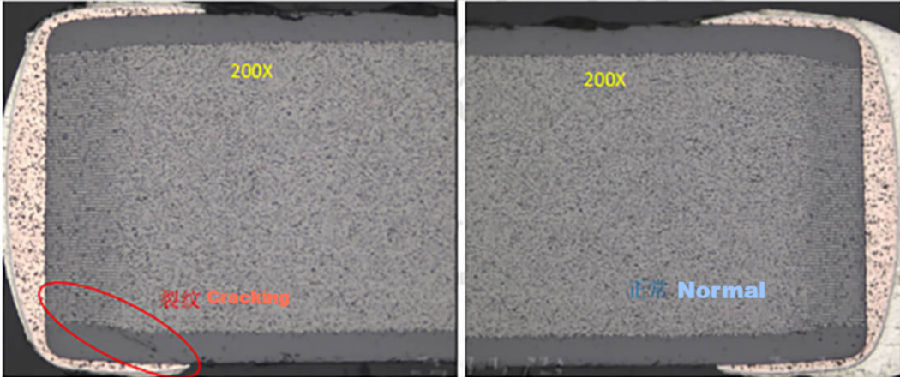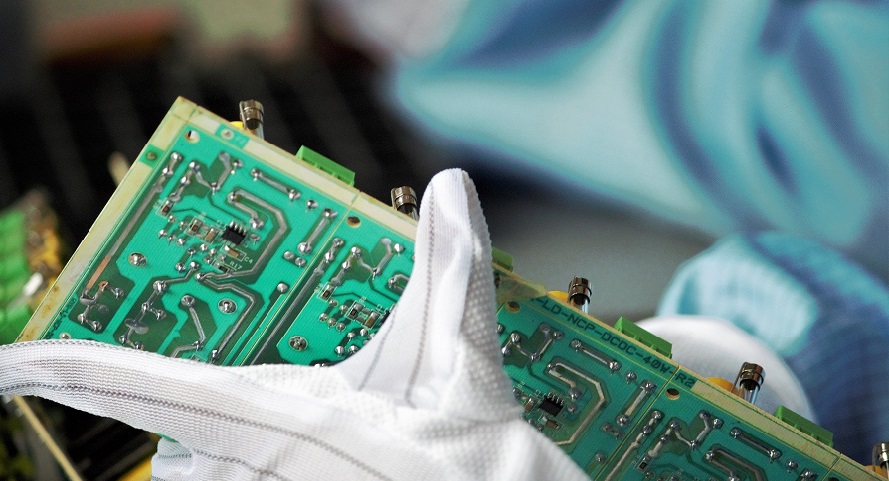-
Integrated Circuits (ICs)
>
- Audio Special Purpose
- Clock/Timing - Application Specific
- Clock/Timing - Clock Buffers, Drivers
- Clock/Timing - Clock Generators, PLLs, Frequency Synthesizers
- Clock/Timing - Delay Lines
- Clock/Timing - IC Batteries
- Clock/Timing - Programmable Timers and Oscillators
- Clock/Timing - Real Time Clocks
- Data Acquisition - ADCs/DACs - Special Purpose
- Data Acquisition - Analog Front End (AFE)
- Data Acquisition - Analog to Digital Converters (ADC)
- Data Acquisition - Digital Potentiometers
- Data Acquisition - Digital to Analog Converters (DAC)
- Data Acquisition - Touch Screen Controllers
- Embedded - CPLDs (Complex Programmable Logic Devices)
- Embedded - DSP (Digital Signal Processors)
- Embedded - FPGAs (Field Programmable Gate Array) with Microcontrollers
- Embedded - FPGAs (Field Programmable Gate Array)
- Embedded - Microcontroller, Microprocessor, FPGA Modules
- Embedded - Microcontrollers - Application Specific
- Embedded - Microcontrollers
- Embedded - Microprocessors
- Embedded - PLDs (Programmable Logic Device)
- Embedded - System On Chip (SoC)
- Interface - Analog Switches, Multiplexers, Demultiplexers
- Interface - Analog Switches - Special Purpose
- Interface - CODECs
- Interface - Controllers
- Interface - Direct Digital Synthesis (DDS)
- Interface - Drivers, Receivers, Transceivers
- Interface - Encoders, Decoders, Converters
- Interface - Filters - Active
- Interface - I/O Expanders
- Interface - Modems - ICs and Modules
- Interface - Modules
- Interface - Sensor and Detector Interfaces
- Interface - Sensor, Capacitive Touch
- Interface - Serializers, Deserializers
- Interface - Signal Buffers, Repeaters, Splitters
- Interface - Signal Terminators
- Interface - Specialized
- Interface - Telecom
- Interface - UARTs (Universal Asynchronous Receiver Transmitter)
- Interface - Voice Record and Playback
- Linear - Amplifiers - Audio
- Linear - Amplifiers - Instrumentation, OP Amps, Buffer Amps
- Linear - Amplifiers - Special Purpose
- Linear - Amplifiers - Video Amps and Modules
- Linear - Analog Multipliers, Dividers
- Linear - Comparators
- Linear - Video Processing
- Logic - Buffers, Drivers, Receivers, Transceivers
- Logic - Comparators
- Logic - Counters, Dividers
- Logic - FIFOs Memory
- Logic - Flip Flops
- Logic - Gates and Inverters - Multi-Function, Configurable
- Logic - Gates and Inverters
- Logic - Latches
- Logic - Multivibrators
- Logic - Parity Generators and Checkers
- Logic - Shift Registers
- Logic - Signal Switches, Multiplexers, Decoders
- Logic - Specialty Logic
- Logic - Translators, Level Shifters
- Logic - Universal Bus Functions
- Memory - Batteries
- Memory - Configuration Proms for FPGAs
- Memory - Controllers
- Memory
- PMIC - AC DC Converters, Offline Switchers
- PMIC - Battery Chargers
- PMIC - Battery Management
- PMIC - Current Regulation/Management
- PMIC - Display Drivers
- PMIC - Energy Metering
- PMIC - Full, Half-Bridge Drivers
- PMIC - Gate Drivers
- PMIC - Hot Swap Controllers
- PMIC - Laser Drivers
- PMIC - LED Drivers
- PMIC - Lighting, Ballast Controllers
- PMIC - Motor Drivers, Controllers
- PMIC - OR Controllers, Ideal Diodes
- PMIC - PFC (Power Factor Correction)
- PMIC - Power Distribution Switches, Load Drivers
- PMIC - Power Management - Specialized
- PMIC - Power Over Ethernet (PoE) Controllers
- PMIC - Power Supply Controllers, Monitors
- PMIC - RMS to DC Converters
- PMIC - Supervisors
- PMIC - Thermal Management
- PMIC - V/F and F/V Converters
- PMIC - Voltage Reference
- PMIC - Voltage Regulators - DC DC Switching Controllers
- PMIC - Voltage Regulators - DC DC Switching Regulators
- PMIC - Voltage Regulators - Linear Regulator Controllers
- PMIC - Voltage Regulators - Linear + Switching
- PMIC - Voltage Regulators - Linear
- PMIC - Voltage Regulators - Special Purpose
- Specialized ICs
- Resistors >
-
Discrete Semiconductor
>
- Diodes - Bridge Rectifiers
- Diodes - Rectifiers - Arrays
- Diodes - Rectifiers - Single
- Diodes - RF
- Diodes - Variable Capacitance (Varicaps, Varactors)
- Diodes - Zener - Arrays
- Diodes - Zener - Single
- Power Driver Modules
- Thyristors - DIACs, SIDACs
- Thyristors - SCRs - Modules
- Thyristors - SCRs
- Thyristors - TRIACs
- Transistors - Bipolar (BJT) - Arrays, Pre-Biased
- Transistors - Bipolar (BJT) - Arrays
- Transistors - Bipolar (BJT) - RF
- Transistors - Bipolar (BJT) - Single, Pre-Biased
- Transistors - Bipolar (BJT) - Single
- Transistors - FETs, MOSFETs - Arrays
- Transistors - FETs, MOSFETs - Arrays
- Transistors - FETs, MOSFETs - Arrays
- Transistors - IGBTs - Arrays
- Transistors - IGBTs - Modules
- Transistors - IGBTs - Single
- Transistors - JFETs
- Transistors - Programmable Unijunction
- Transistors - Special Purpose
-
Capacitors
>
- Accessories
- Aluminum Electrolytic Capacitors
- Aluminum - Polymer Capacitors
- Capacitor Networks Arrays
- Electric Double Layer Capacitors (EDLC), Supercapacitors
- Film Capacitors
- Mica and PTFE Capacitors
- Niobium Oxide Capacitors
- Silicon Capacitors
- Tantalum Capacitors
- Tantalum - Polymer Capacitors
- Thin Film Capacitors
- Trimmers, Variable Capacitors
- Ceramic Capacitors
-
Connectors, Interconnects
>
- Backplane Connectors - Accessories
- Backplane Connectors - ARINC Inserts
- Backplane Connectors - ARINC
- Backplane Connectors - Contacts
- Backplane Connectors - DIN 41612
- Backplane Connectors - Hard Metric, Standard
- Backplane Connectors - Housings
- Backplane Connectors - Specialized
- Banana and Tip Connectors - Accessories
- Banana and Tip Connectors - Adapters
- Banana and Tip Connectors - Binding Posts
- Banana and Tip Connectors - Jacks, Plugs
- Barrel - Accessories
- Barrel - Adapters
- Barrel - Audio Connectors
- Barrel - Power Connectors
- Between Series Adapters
- Blade Type Power Connectors - Accessories
- Blade Type Power Connectors - Contacts
- Blade Type Power Connectors - Housings
- Blade Type Power Connectors
- Card Edge Connectors - Accessories
- Card Edge Connectors - Adapters
- Card Edge Connectors - Contacts
- Card Edge Connectors - Edgeboard Connectors
- Circular Connectors - Accessories
- Circular Connectors - Adapters
- Circular Connectors - Backshells and Cable Clamps
- Circular Connectors - Contacts
- Coaxial Connectors (RF) - Accessories
- Coaxial Connectors (RF) - Adapters
- Coaxial Connectors (RF) - Contacts
- Coaxial Connectors (RF) - Terminators
- Coaxial Connectors (RF)
- Contacts - Leadframe
- Contacts - Multi Purpose
- Contacts, Spring Loaded (Pogo Pins), and Pressure
- D-Shaped Connectors - Centronics
- D-Sub, D-Shaped Connectors - Accessories - Jackscrews
- D-Sub, D-Shaped Connectors - Accessories
- D-Sub, D-Shaped Connectors - Adapters
- D-Sub, D-Shaped Connectors - Backshells, Hoods
- D-Sub, D-Shaped Connectors - Contacts
- D-Sub, D-Shaped Connectors - Housings
- D-Sub, D-Shaped Connectors - Terminators
- FFC, FPC (Flat Flexible) Connectors - Accessories
- FFC, FPC (Flat Flexible) Connectors - Contacts
- FFC, FPC (Flat Flexible) Connectors - Housings
- FFC, FPC (Flat Flexible) Connectors
- Fiber Optic Connectors - Accessories
- Fiber Optic Connectors - Adapters
- Fiber Optic Connectors - Housings
- Fiber Optic Connectors
- Heavy Duty Connectors - Accessories
- Heavy Duty Connectors - Assemblies
- Heavy Duty Connectors - Contacts
- Heavy Duty Connectors - Frames
- Heavy Duty Connectors - Housings, Hoods, Bases
- Heavy Duty Connectors - Inserts, Modules
- Keystone - Accessories
- Keystone - Faceplates, Frames
- Keystone - Inserts
- LGH Connectors
- Memory Connectors - Accessories
- Memory Connectors - Inline Module Sockets
- Memory Connectors - PC Card Sockets
- Memory Connectors - PC Cards - Adapters
- Modular Connectors - Accessories
- Modular Connectors - Adapters
- Modular Connectors - Jacks With Magnetics
- Modular Connectors - Jacks
- Modular Connectors - Plug Housings
- Modular Connectors - Plugs
- Modular Connectors - Wiring Blocks - Accessories
- Modular Connectors - Wiring Blocks
- Photovoltaic (Solar Panel) Connectors - Accessories
- Photovoltaic (Solar Panel) Connectors - Contacts
- Photovoltaic (Solar Panel) Connectors
- Pluggable Connectors - Accessories
- Pluggable Connectors
- Power Entry Connectors - Accessories
- Power Entry Connectors - Inlets, Outlets, Modules
- Rectangular Connectors - Accessories
- Rectangular Connectors - Adapters
- Rectangular Connectors - Arrays, Edge Type, Mezzanine (Board to Board)
- Rectangular Connectors - Board In, Direct Wire to Board
- Rectangular Connectors - Contacts
- Rectangular Connectors - Free Hanging, Panel Mount
- Rectangular Connectors - Headers, Receptacles, Female Sockets
- Rectangular Connectors - Headers, Specialty Pin
- Rectangular Connectors - Housings
- Rectangular Connectors - Spring Loaded
- Shunts, Jumpers
- Sockets for ICs, Transistors - Accessories
- Sockets for ICs, Transistors - Adapters
- Sockets for ICs, Transistors
- Solid State Lighting Connectors - Accessories
- Solid State Lighting Connectors - Contacts
- Solid State Lighting Connectors
- Terminal Blocks - Accessories - Jumpers
- Terminal Blocks - Accessories - Marker Strips
- Terminal Blocks - Accessories - Wire Ferrules
- Terminal Blocks - Accessories
- Terminal Blocks - Adapters
- Terminal Blocks - Barrier Blocks
- Terminal Blocks - Contacts
- Terminal Blocks - Din Rail, Channel
- Terminal Blocks - Headers, Plugs and Sockets
- Terminal Blocks - Interface Modules
- Terminal Blocks - Panel Mount
- Terminal Blocks - Power Distribution
- Terminal Blocks - Specialized
- Terminal Blocks - Wire to Board
- Terminal Junction Systems
- Terminal Strips and Turret Boards
- Terminals - Accessories
- Terminals - Adapters
- Terminals - Barrel, Bullet Connectors
- Terminals - Foil Connectors
- Terminals - Housings, Boots
- Terminals - Knife Connectors
- Terminals - Magnetic Wire Connectors
- Terminals - PC Pin Receptacles, Socket Connectors
- Terminals - PC Pin, Single Post Connectors
- Terminals - Quick Connects, Quick Disconnect Connectors
- Terminals - Rectangular Connectors
- Terminals - Ring Connectors
- Terminals - Screw Connectors
- Terminals - Solder Lug Connectors
- Terminals - Spade Connectors
- Terminals - Specialized Connectors
- Terminals - Turret Connectors
- Terminals - Wire Pin Connectors
- Terminals - Wire Splice Connectors
- Terminals - Wire to Board Connectors
- USB, DVI, HDMI Connectors - Accessories
- USB, DVI, HDMI Connectors - Adapters
- USB, DVI, HDMI Connectors
- Card Edge Connectors - Edgeboard Connectors
- Circular Connectors - Housings
- Circular Connectors
- D-Sub Connectors
- Rectangular Connectors - Board Spacers, Stackers (Board to Board)
- Rectangular Connectors - Headers, Male Pins
- Rectangular Connectors-Headers Receptacles,Female Sockets
-
Optoelectronics
>
- Accessories
- Ballasts, Inverters
- Display Bezels, Lenses
- Display Modules - LCD, OLED Character and Numeric
- Display Modules - LCD, OLED,
- Display Modules - LED Character and Numeric
- Display Modules - LED Dot Matrix and Cluster
- Display Modules - Vacuum Fluorescent (VFD)
- Display, Monitor - LCD Driver/Controller
- Electroluminescent
- Fiber Optics - Attenuators
- Fiber Optics - Receivers
- Fiber Optics - Switches, Multiplexers, Demultiplexers
- Fiber Optics - Transceiver Modules
- Fiber Optics - Transmitters - Discrete
- Fiber Optics - Transmitters - Drive Circuitry Integrated
- HeNe Laser Heads
- HeNe Laser System Accessories
- HeNe Laser Systems
- Lamps - Cold Cathode Fluorescent (CCFL) & UV
- Lamps - Incandescents, Neons
- Laser Diodes, Laser Modules - Accessories
- Laser Diodes, Laser Modules - Laser Delivery, Laser Fibers
- Laser Diodes, Laser Modules
- LED Addressable, Specialty
- LED Emitters - Infrared, UV, Visible4,747 Items
- LED Indication - Discrete
- LED Lighting - COBs, Engines, Modules, Strips
- LED Lighting - Color
- LED Lighting Kits
- LED Lighting - White
- LED Thermal Products
- LEDs - Circuit Board Indicators, Arrays, Light Bars, Bar Graphs
- LEDs - Lamp Replacements
- LEDs - Spacers, Standoffs
- Optics - Lenses
- Optics - Light Pipes
- Optics - Reflectors
- Optics - Remote Phosphor Light Source
- Optomechanical
- Panel Indicators, Pilot Lights
- Touch Screen Overlays
- Xenon Lighting
-
Circuit Protection
>
- Accessories
- Circuit Breakers
- Electrical, Specialty Fuses
- Fuseholders
- Fuses
- Gas Discharge Tube Arresters (GDT)
- Ground Fault Circuit Interrupter (GFCI)
- Inrush Current Limiters (ICL)
- Lighting Protection
- PTC Resettable Fuses
- Surge Suppression ICs
- Thermal Cutoffs (Thermal Fuses and Breakers)
- TVS - Diodes
- TVS - Mixed Technology
- TVS - Surge Protection Devices (SPDs)
- TVS - Thyristors
- TVS - Varistors, MOVs
- Filters >
- Isolators >
- Relays >
-
Sensors, Transducers
>
- Accessories
- Amplifiers
- Camera Modules
- Color Sensors - Industrial
- Color Sensors
- Current Sensors
- Encoders - Industrial
- Encoders
- Float, Level Sensors - Industrial
- Float, Level Sensors
- Flow Sensors - Industrial
- Flow Sensors
- Force Sensors - Industrial
- Force Sensors
- Gas Sensors
- Humidity, Moisture Sensors
- Image Sensors-Camera
- IrDA Transceiver Modules
- LVDT Transducers (Linear Variable Differential Transformer)
- Magnetic Sensors - Compass, Magnetic Field (Modules)
- Magnetic Sensors - Linear, Compass (ICs)
- Magnetic Sensors - Position, Proximity, Speed (Modules) - Industrial
- Magnetic Sensors - Position, Proximity, Speed (Modules)
- Magnetic Sensors - Switches (Solid State)
- Magnets - Multi Purpose
- Magnets - Sensor Matched
- Motion Sensors - Accelerometers
- Motion Sensors - Gyroscopes
- Motion Sensors - IMUs (Inertial Measurement Units)
- Motion Sensors - Inclinometers
- Motion Sensors - Optical
- Motion Sensors - Tilt Switches
- Motion Sensors - Vibration
- Multifunction
- Optical Sensors - Ambient Light, IR, UV Sensors
- Optical Sensors - Camera Modules
- Optical Sensors - Distance Measuring
- Optical Sensors - Image Sensors, Camera
- Optical Sensors - Photo Detectors - CdS Cells
- Optical Sensors - Photodiodes
- Optical Sensors - Photoelectric, Industrial
- Optical Sensors - Photointerrupters - Slot Type - Logic Output
- Optical Sensors - Photointerrupters - Slot Type - Transistor Output
- Optical Sensors - Photonics - Counters, Detectors, SPCM (Single Photon Counting Module)
- Optical Sensors - Phototransistors
- Optical Sensors - Reflective - Analog Output
- Optical Sensors - Reflective - Logic Output
- Particle, Dust Sensors
- Position Sensors - Angle, Linear Position Measuring
- Pressure Sensors, Transducers - Industrial
- Pressure Sensors, Transducers
- Proximity/Occupancy Sensors - Finished Units
- Proximity Sensors - Industrial
- Proximity Sensors
- Sensor Cable - Accessories
- Sensor Cable - Assemblies
- Sensor Interface - Junction Blocks
- Shock Sensors
- Solar Cells
- Specialized Sensors
- Strain Gauges
- Temperature Sensors - Analog and Digital Output - Industrial
- Temperature Sensors - Analog and Digital Output
- Temperature Sensors - NTC Thermistors
- Temperature Sensors - PTC Thermistors
- Temperature Sensors - RTD (Resistance Temperature Detector)
- Temperature Sensors - Thermocouples, Temperature Probes
- Temperature Sensors - Thermostats - Mechanical - Industria
- Temperature Sensors - Thermostats - Mechanical
- Temperature Sensors - Thermostats - Solid State
- Touch Sensors
- Ultrasonic Receivers, Transmitters - Industrial
- Ultrasonic Receivers, Transmitters
- Optics >
-
Switches
>
- Accessories - Boots, Seals
- Accessories - Caps
- Accessories
- Cable Pull Switches
- Configurable Switch Components - Body
- Configurable Switch Components - Contact Block
- Configurable Switch Components - Illumination Source
- Configurable Switch Components - Lens
- DIP Switches
- Disconnect Switch Components
- Emergency Stop (E-Stop) Switches
- Interlock Switches
- Keylock Switches
- Keypad Switches
- Magnetic, Reed Switches
- Navigation Switches, Joystick
- Programmable Display Switches
- Pushbutton Switches - Hall Effect
- Rocker Switches
- Rocker Switches
- Selector Switches
- Slide Switches
- Limit Switches
- Tactile Switches
- Thumbwheel Switches
- Toggle Switches
- Pushbutton Switches








